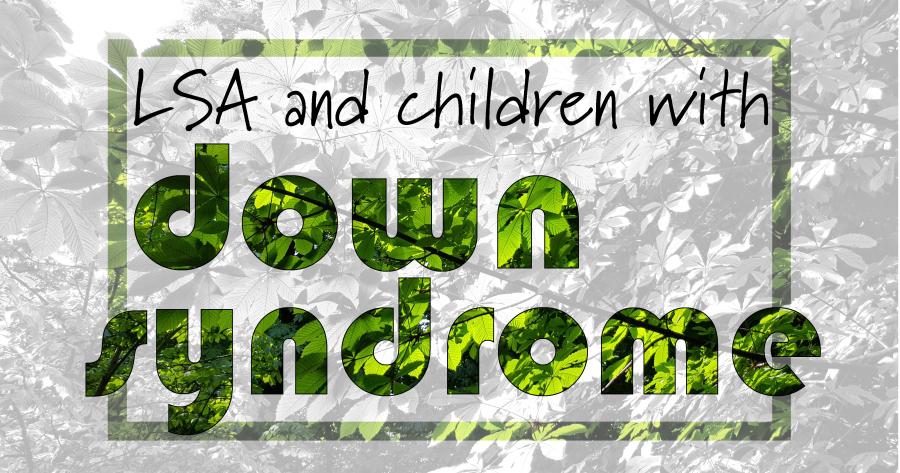
Using Language Sample Analysis with Special Populations: Down Syndrome

Using Language Sample Analysis with Special Populations: Down Syndrome
Published at: 2018-08-02
Hopefully you already know that language sample analysis can be used to analyze the speech and language of special populations, such as clients with Down syndrome (DS). But you might be wondering just exactly how well it works and how valid the SALT analysis can be. Well, SALT and associated researchers spent about a decade looking at that question. And as an added bonus, that research has given us some valuable insight on how best to modify the regular SALT protocols in order to accommodate speakers with Down Syndrome. Way back when, in the mid-1990s, SALT’s Jon Miller and colleagues Allison Sedey and Giuliana Miolo published the results of this research. The project followed 20 children with DS and 22 typically-developing children initially matched on non-verbal cognitive skills; the children ranged in age from 12 - 15 months. The aim was to capture early emerging language skills, comparing children who begin the process later chronologically (DS) with those with more equivalent chronological and cognitive progress. Along with a variety assessments, we collected 15 minute language samples of parent-child play with a standard set of toys and a second language sample with an SLP staff member. In addition, we had the parent complete the MBCDI The MacArthur-Bates Communicative Development Inventories (MBCDI), a parent-report measure of early vocabulary and sentence development. We did this for two reasons. First, we wanted to document as best we could each child’s language progress, even when they we not very talkative in our language sample sessions. Second, we wanted to test how well parents of children with developmental disabilities reported their child’s progress compared with parents of typical children. So here is what we learned.
- Parents of children with DS reported their child’s language progress as accurately as parents of typical children, with correlations above 80%.
- The language samples from children with DS interacting with parents were only slightly less robust than when the children were interacting with an SLP.
- Parents and SLPs were both verbally responsive to their children, but parents were more directive. Research has documented that both responsiveness and directiveness are significant contributors to advancing language development.
What this means in relation to clinical practice is that LSA can be used effectively with children with DS. As children with DS advance verbally, LSA can capture their functional communication just as effectively as it can with typically-developing children. However, there is one major hurdle to overcome: intelligibility. Children with DS struggle with speech intelligibility which, in turn, can make language sample analysis a challenge. We need to be sure that we are measuring language progress, not speech clarity. As a rule of thumb, we want to have a sample that is more than 70% intelligible (and preferably 80%) in order to have sufficient confidence that the transcript will reflect the speaker’s language production abilities and progress. Time and experience have led us to the three following suggestions to increase intelligibility and enhance transcription accuracy. First, the choice of elicitation materials can direct the content of the language sample. If you use a standard set of materials, the universe of possible word choices narrows down to a much smaller set of likely productions. A smaller set of words - and your increased familiarity with them - enhances accurate word identification during transcription.
- If you are eliciting a sample from a play session, use a standard and limited set of toys. The content words (in particular) will then be familiar to the examiner. And the vocabulary choices will be more controlled.
- As children advance in ability, narrative samples can elicited. Personal narratives may be more difficult to understand and the content may be new and unfamiliar to the listener. However, story telling of a familiar tale such as The Three Little Pigs allows for vocabulary production familiar to the listener.
- Story retell samples using a standard set of books (SALT recommends the frog stories by Mercer Mayer) is also an excellent choice. The story has been shared with the speaker, and the vocabulary is familiar to both parties, enhancing perceptual abilities.
Second, when you are transcribing the session, only replay unclear segments a maximum of three times, then move on. This doesn’t help intelligibility, but it does protect the integrity of your analysis. If you keep replaying and replaying an audio segment, eventually you will hear something that sounds right-ish and you will be tempted to include this in your transcript. Don’t. Avoid inventing words that the speaker may not have produced . Third and finally, if after all your hard work eliciting and transcribing your sample is still largely unintelligible, you have one last option. Try to review the audio and transcript with parents or teachers who know the child. They may be more familiar with that child’s speech and pronunciation and so may be better able to help identify unintelligible segments. Do your best to keep them honest, though; remember that guessing at what might be right will reduce the integrity of your analysis. Want to read the original study? Miller, J., Sedey, A., Miolo, G. (1995). Validity of parent report measures of vocabulary acquisition in Children with Down Syndrome. Journal of Speech and Hearing Research, 38, 5: 1037-1044. Available at: https://jslhr.pubs.asha.org/article.aspx?articleid=1780904
No Comments yet. Be the first to comment.